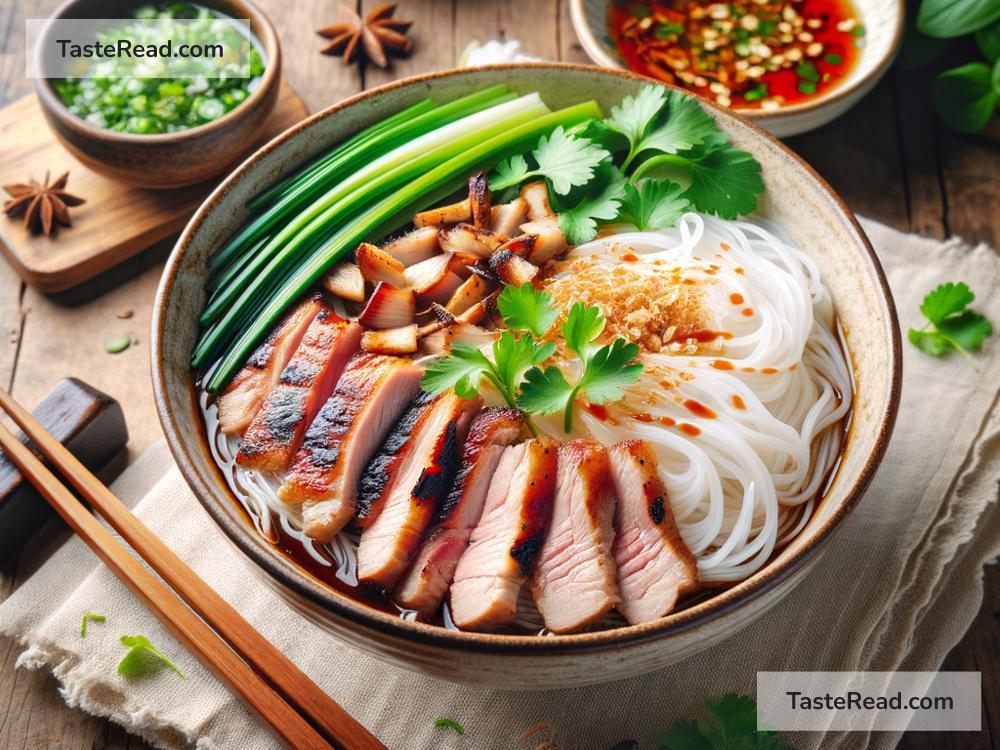Discovering the Delicate Flavors of Vietnamese Bun Cha
Vietnamese cuisine offers a treasure trove of flavors that enchant the palate in a symphony of tastes and textures—a delightful discovery for any food enthusiast. Among the variety of dishes that define this culinary landscape, Bun Cha stands out as a testament to the subtle and intricate flavors characteristic of Vietnam. This traditional dish, originating from the bustling streets of Hanoi, captures the essence of Vietnamese cooking, blending sweet, salty, sour, and spicy elements in perfect harmony.
Bun Cha is a delightful combination of grilled pork, fresh herbs, a tangy dipping sauce, and rice vermicelli noodles—a light yet satisfying dish that encapsulates the essence of Vietnamese cuisine. The process of making Bun Cha, while seemingly straightforward, is nuanced, requiring precision and care to achieve the balance of flavors that make this dish so appealing.
The Components of Bun Cha
The heart of Bun Cha lies in its four primary components, each contributing its unique flavor and texture to create a harmonious dish.
1. Grilled Pork: The star of Bun Cha is the grilled pork, which comes in two forms: pork patties and thin slices of pork belly. The meat is marinated in a mixture of shallots, garlic, sugar, fish sauce, and black pepper before being grilled to perfection. The result is smoky, savory bites of pork that are charred on the outside and tender on the inside.
2. Nuoc Cham Sauce: No Vietnamese dish is complete without its sauce, and Bun Cha is no exception. The dipping sauce, known as Nuoc Cham, is a concoction of fish sauce, water, sugar, lemon juice or vinegar, garlic, and chili. This tangy and slightly sweet sauce serves as a dipping liquid for the meats and a dressing for the noodles and herbs, tying all components of the dish together.
3. Rice Vermicelli Noodles: These thin, delicate noodles known as “Bun” in Vietnamese, provide a soft and mild base that complements the bold flavors of the grilled pork and sauce. The noodles are typically blanched in hot water for a few minutes until soft and then drained before serving.
4. Fresh Herbs and Vegetables: A generous assortment of fresh herbs and vegetables is essential to the Bun Cha experience. Lettuce, mint, cilantro, bean sprouts, and green onions are among the greens that accompany the pork and noodles. These not only add a burst of freshness but also a crunchy texture that contrasts beautifully with the other elements of the dish.
The Ritual of Eating Bun Cha
Eating Bun Cha is an interactive experience that involves a bit of assembly. Diners are typically served a plate of grilled pork, a bowl of dipping sauce, a heap of rice vermicelli noodles, and a plate piled high with fresh herbs and vegetables. The ritual involves taking a small portion of noodles, adding a few pieces of pork, and then a selection of herbs and vegetables. This little bundle is then dipped into the Nuoc Cham sauce before being eaten. The process is not only part of the charm of enjoying Bun Cha but also allows each person to customize their bite according to their preference.
Discovering Bun Cha
For those looking to venture into the world of Vietnamese cuisine, Bun Cha offers a perfect starting point. Its simple yet sophisticated flavor profile makes it accessible to newcomers while still providing depth and complexity for the seasoned palate. Whether you are trying it at a bustling street-side stall in Hanoi, a Vietnamese restaurant abroad, or making it at home, Bun Cha promises a culinary journey that is both comforting and exhilarating.
So, why not embark on this flavorful journey and discover the delicate tastes of Vietnamese Bun Cha for yourself? It’s a dish that truly embodies the spirit of Vietnamese cooking: fresh, vibrant, and beautifully balanced.


